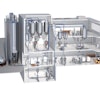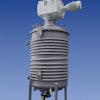
Although still a small portion of the overall pet food market, raw pet food sales grew at faster rates than kibble or conventional wet dog and cat foods during the pandemic. With the rising popularity of raw pet foods, people may believe they are following safe practices more than they really are. Raw pet food brands may need to increase education of consumers on safe handling of raw products to counteract pet owners’ cognitive biases. During a study conducted in the United Kingdom, pet owners tended to underestimate health risks from improper handling of raw products, such as rinsing raw meat or not segregating utensils and equipment. Researchers at Cardiff Metropolitan University conducted a survey, reviewed online discussions and brand websites. Pet owners’ beliefs about their food safety practices may not match their actual behaviors. The scientists published their results in the Journal of Food Protection.
“The majority of pet owners perceived full confidence in their ability to prepare raw meat-based food safely and did not perceive themselves or members of their family at risk of foodborne illness,” study author Veronika Bulochova said in an email. “It has been suggested that ‘optimistic bias’ (when someone believes they are less likely to experience a negative outcome than others) may contribute to pet owners’ perception of risk of potential foodborne illness and to neglecting food safety practices.
Habits and learnt behaviors are common in households and may lead to practices performed incorrectly or not employed at all. Moreover, mutual support among pet owners in social media groups may lead to the endorsement of food safety malpractices.”
This optimistic belief that Salmonella only infects other people exemplifies a cognitive bias. These repeated, often subconscious and error-prone, mental shortcuts were first described by psychologists Amos Tversky and Daniel Kahneman. In the case of raw pet foods, brands may need to do more to counteract the tendency of pet owners to underestimate their own vulnerability, Bulochova said.
In the study, the majority (61%) of raw pet food manufacturer or supplier websites failed to provide any food safety instructions or warnings to pet owners, she said. The information was inconsistent and varied between different sources.
“Raw pet food companies could play an essential role in informing and enabling pet owners to engage with recommended food safety practices, when preparing or providing raw meat for pets, to safeguard themselves, their families and their pets,” she said. “Provision of information about the potential hazards associated with raw meat and raw meat-based pet diets, as well as comprehensive information about the appropriate food safety practices is vital. Such information would enable pet owners to take appropriate actions to minimize the risk of possible foodborne illness in their household. Most importantly, interventions need to highlight that employment of food safety practices benefits the pet owners.
Pet owners rely on social media and online sources for raw meat-based feeding information, she said. Social media sources and pet food companies’ online websites should be utilized for pet owner food safety education, alongside the comprehensive product labelling and other traditional strategies.
Details of raw pet food safety beliefs research
Bulochova used an online research method to analyze more than 800 posts by pet owners, in 26 discussion threads relating to raw pet feeding on the Pet Forums Community, a pet owner social media site in the United Kingdom. She reviewed 33 UK-based raw meat-based pet food manufacturers and supplier websites. Her online questionnaire relating to food safety practices was completed by 174 pet owners feeding raw meat-based diets.
Overall, she concluded that although pet owners were aware of potentially dangerous microbes associated with raw meat, many pet owners underestimated the potential risks to their own health. Likewise, pet owners were confused about appropriate food safety practices. While pet owners were confident in the safety of the products they purchased, they didn’t report consistently using appropriate food safety practices. Two of the most frequently reported malpractices were rinsing raw meat (27%) and absence of segregated utensils and equipment (52%).
Bulochova recommended that raw pet food brands encourage customers to follow these practices:
- Thaw raw meat-based pet food in a separate sealed container in the refrigerator
- Do not wash raw meat.
- Remove and dispose of any raw meat-based food not consumed by pets and clean the feeding area.
- Ensure surfaces, utensils and bowls used for raw pet food are segregated from other kitchen equipment and are washed thoroughly after use.
- After handling raw pet food or feeding bowls wash hands for 20 seconds using soap and rubbing all parts of the hands and fingers before rinsing and drying thoroughly.

















